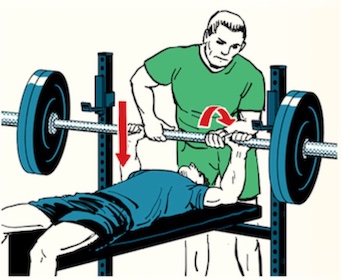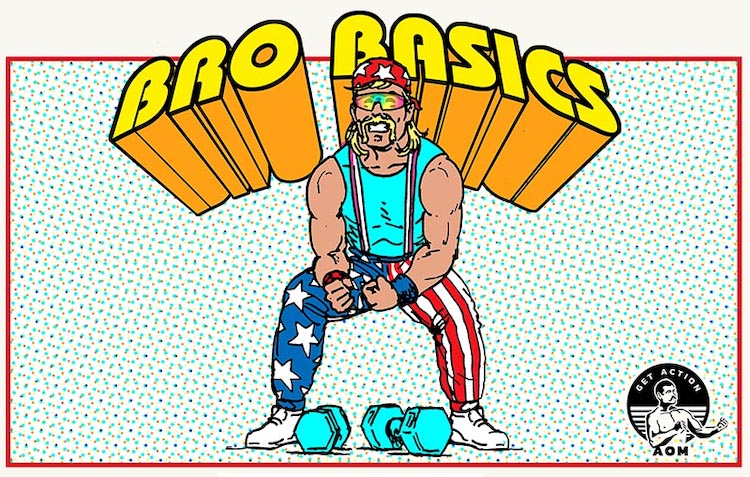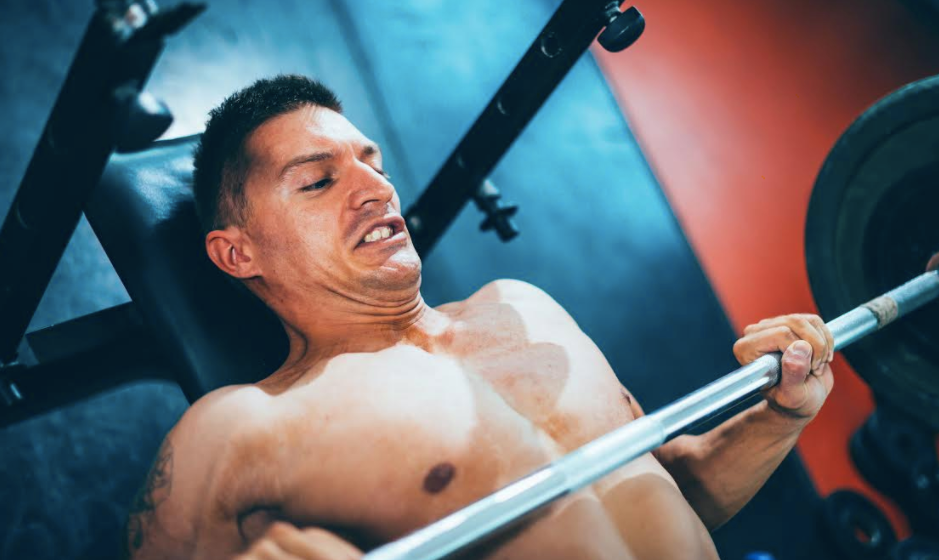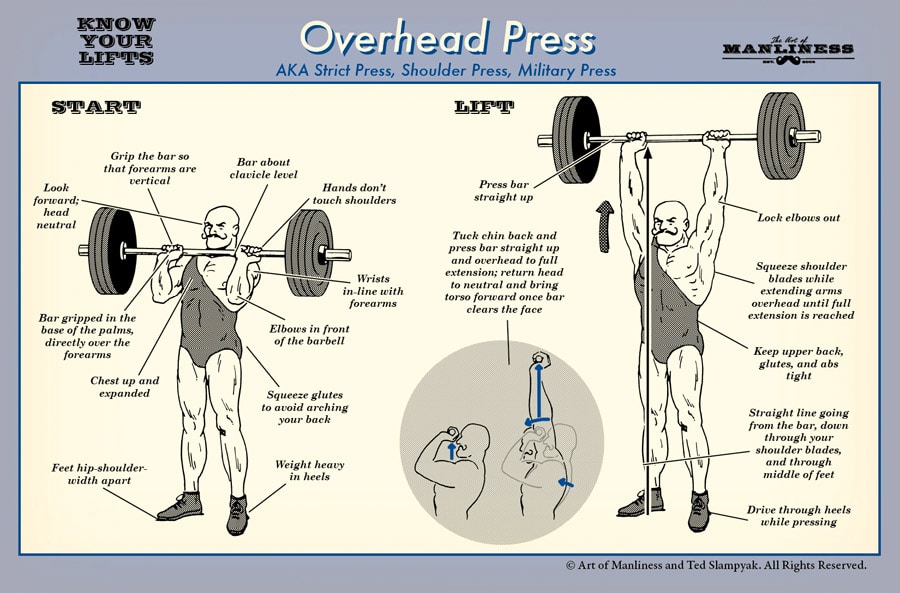
Whenever weightlifting comes up among a bunch of dudes, someone will eventually ask a question like, “How much ya bench?”
We know what the interrogator wants to know with this question: What’s the heaviest weight you can lift on the bench press for a single repetition?
He’s asking about your one-rep max.
While not the only measure of strength, the one-rep max is a pretty good gauge of it. It’s also handy for other things: It can be used to fine-tune your programming; if you plan on competing, testing your one-rep max can help you practice the skill of lifting a really heavy weight a single time; and, let’s face it, testing your one-rep max can simply be a lot of fun.
But the one-rep max isn’t something you should do that often. You increase your chances of injury when you lift as heavy as possible, and testing your one-rep max can be really fatiguing. Injury and excessive fatigue are no bueno for gains.
So how often should you test your one-rep max so you get the benefits while minimizing the downsides?
To answer that question, I asked my strength coach, Matt Reynolds, for advice. Here’s what he told me.
How Often Should You Test Your One-Rep Max?
If you decide to test your one-rep max, how often should you do it?
Well, it depends on whether you’re a novice, intermediate, or advanced lifter.
Novice to Early-Intermediate Lifters
According to Matt, novice to early-intermediate lifters should test their one-rep max every 8 to 10 weeks.
Whether you’re a novice, intermediate, or advanced lifter isn’t determined by how long you’ve been training but how long it takes to fully recover from a training session. A novice to early-intermediate lifter can usually recover from a training session within 24 to 72 hours. Typically, novice and early-intermediate lifters are on some sort of linear progression program where they’re adding weight to the bar each workout.
If that describes you, shoot to do your one-rep max every two months or so.
“One-rep maxes are one of the biggest motivators for my novice lifters,” Matt told me. “They provide a nice dopamine hit which can help early lifters continue to train regularly.”
Matt also thinks testing one-rep maxes can help drive adaptation in new lifters; that is, they can help you get stronger.
“There’s an argument out there that testing your one-rep max doesn’t do anything to drive adaptation in the strength development process, but after coaching thousands of clients, our team has seen that testing one-rep max does indeed help our athletes get stronger,” Matt said.
How should you test your one-rep max as a novice or early-intermediate lifter?
Here’s what Matt recommends: Treat your one-rep max attempt like a regular workout. But instead of doing your scheduled working sets, you’re going to work up to your one-rep max doing heavy singles. Once you hit your one-rep max, you’ll do a back-off set of five reps at light weight.
The weights you’ll use will depend on where you are strength-wise. But here’s a rough example: let’s say that in a regular workout, you’re currently lifting 405 for a set of five reps; in that case, here’s what a sets x reps scheme for a work-up to a one-rep max might look like for you:
Warm-up:
- 1×5 @ 135 lbs
- 1×3 @ 225 lbs
- 1×2 @ 315 lbs
- 1×1 @ 415 lbs
One rep max attempts:
- 1 @ 425 lbs (Lift felt really fast; can make a pretty decent jump in weight)
- 1 @ 445 lbs (Starting to feel a bit grindy; go up but just 10 lbs)
- 1 @ 455 lbs (Slowing down more, but you still feel like you can make one more 10-pound jump)
- 1 @ 465 lbs (That was a grind, but you got it! New PR!)
As you can see, figuring out how to make your jumps in weight will go by feel. Using a rate of perceived exertion (RPE) scale can help you figure out how to make your jumps in weight.
RPE 1 is basically no effort, and RPE 10 is full effort. When a lift feels like RPE 10, it feels like you couldn’t do another rep after that lift.
If a lift feels like RPE 7, you can make pretty big jumps in weight. As you get to RPE 8, start making smaller jumps in weight.
The goal for testing your one-rep max is to hit a lift that feels like RPE ~9.5 to 10. That’s your one-rep max.
After you’ve hit your one-rep max, do a back-off set of five reps at a lighter weight.
Late-Intermediate to Advanced Lifters
When you’re a late-intermediate to advanced lifter, it can take several days to a week to recover between workouts.
If you fall into this category, how often you should test your one-rep max will depend on if you’re training for a competition or not.
If you’re training for a competition, you’ll likely have programming designed to allow you to peak at the time of your competition, where you will hopefully hit a one-rep max on all the lifts in which you’re competing.
If you’re not training for a competition, Matt says when you should try for a one-rep PR should be more intuitive. “If you have a day where you walk into the gym and all your warm-up sets are feeling great, and the bar is feeling light, go for the PR,” Matt told me. “As you get along in your lifting career, you don’t know how many more opportunities you have to hit a one-rep max PR, so if a PR is there for the taking, take it.”
But Matt warns that with this more intuitive approach to testing one-rep maxes, you can’t get greedy with it: “You can’t be trying to hit one-rep max PRs every week or even every other week. That will just disrupt your training.”
When you do decide to go for a one-rep max, treat that day like any other workout. Work up to your heavy rep, and once you make the attempt, follow it up with two to three back-off sets of three to five reps at a lighter weight.







